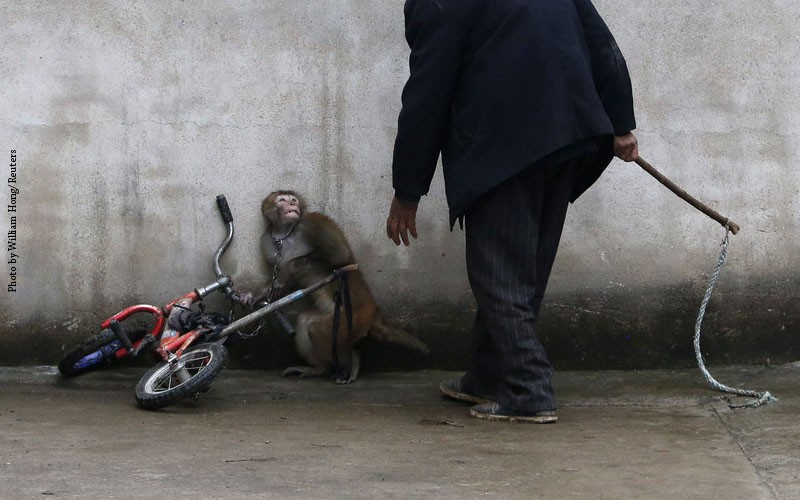Edited by Yara Alsayes
Featured Image by William Hong/Reuters
It’s summertime and people are thinking of creative ways to entertain their children. One of said ways is to take children to the circus. It’s been widely accepted (and sometimes even encouraged) for generations. Perhaps it’s time we should address the elephant in the room (which is probably a sad, tortured elephant), circus animals live unhappy, painful lives.
“Some call it training, some call it bravery of the “lion tamer”, but let’s call it what it is: it’s brutality”
This article is about circus animals and what it takes to make wild animals perform. Did you ever think about what it takes for a lion and a horse – natural predator and prey – to deny all natural behavioral instincts and comply with the command of a human being? Did you think about what it takes to make an animal that naturally fears fire jump through a fire hoop? Do you know what would make a full grown elephant stand on one foot on top of a pedestal? Some call it training, some call it bravery of the “lion tamer”, but let’s call it what it is: it’s brutality. What happens to those animals is a breaking of their spirit, so they wouldn’t be aware of their own strength. Constant pain and abuse are employed so whenever they’d see their trainer or even just their whip, they’d know pain is coming and just find it easier to obey.
Let us take you through a small journey of what happens to these animals behind the scenes. Take elephants for example; Elephant training begins from when they are babies, they are taken away from the wild and forced to begin training.

This photo shows a baby elephant as it is stretched out and beaten with the worst kind of stick there is; a bull hook. That is not all; elephants are also shocked with electricity.
These animals cry and struggle while they are forced into silly positions, positions that can cause harm to their joints and limbs. In the wild, it is not normal for an elephant to stand on its hind legs, and only some of the male elephants do so, but circus elephants do this all the time. Many animals have been diagnosed with various health problems due to the silly things trainers make them do, yet they still force them to perfom. In the wild, elephants can cover 50 miles in one day. In circuses, the only distance an elephant travels is from his cage to the stage.
Lions and tigers don’t fare any better. Animals, like us humans, have natural instincts and one of them is their natural fear of fire. Imagine what has to be done, what kind of brutality it takes, to make an animal fear a human more than fire!
“what kind of brutality it takes, to make an animal fear a human more than fire!”
Elephants, tigers and other circus animals are wild animals. Each one comes from a different place and each one has their own habits and needs. Yet in the circus they all live under the same conditions, cramped up, starved so they wouldn’t have any energy to be dangerous, and forced every day to perform repetitive tricks. Wild animals were brought in this world to balance it and live in the wild.
Monkeys don’t get it any better, whether they are part of a circus act or a street act, they are brutally beaten and whipped by their trainers. Monkeys aren’t supposed to entertain us, they aren’t supposed to walk on stilts and ride bicycles. However, they’ll do that in fear of their “masters”.
“If we continue to fund circuses, bullfights, zoos and other places that use animals for entertainment, the abuse will never stop”
If we continue to fund circuses, bullfights, zoos and other places that use animals for entertainment, the abuse will never stop. It has to begin with us. Next time you think about going to a circus, just think of where your money is actually going and what you’ll be teaching your kids. The animal is merely an investment to circus owners. Animals are not ours to use or abuse. A night at the circus is not worth a lifetime of torture for an innocent animal.
Cruelty is not okay, abuse is not okay, Circuses are not okay!

